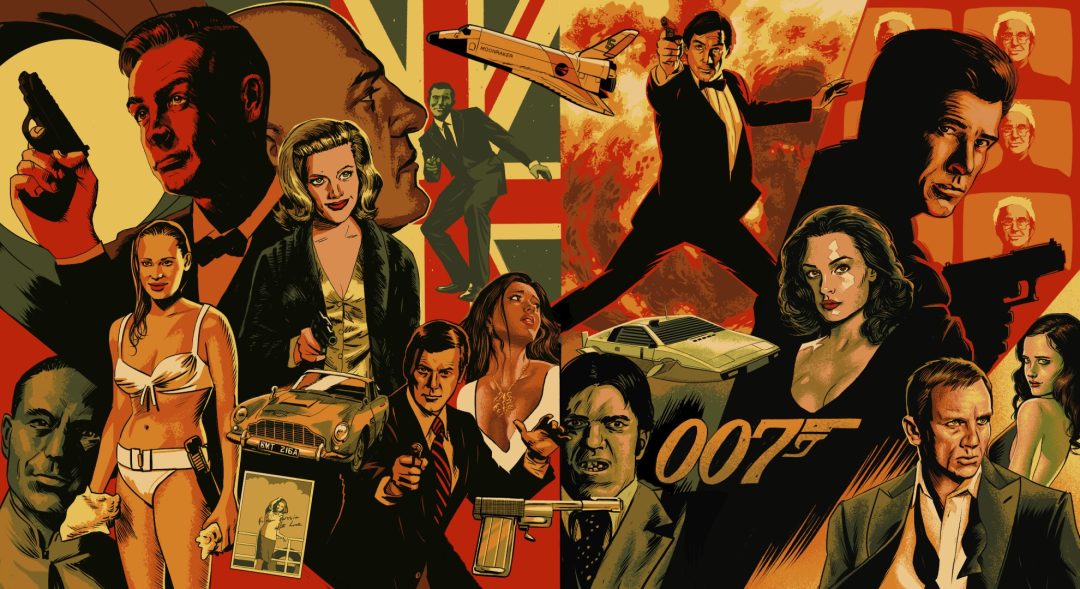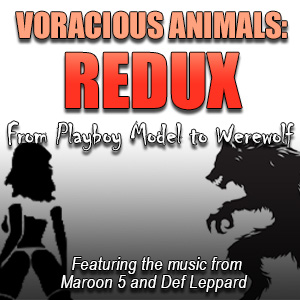[et_pb_section admin_label=”section”]
[et_pb_row admin_label=”row”]
[et_pb_column type=”4_4″][et_pb_text admin_label=”Text”]The Connery era fades into the rearview mirror. Dr. No, From Russia With Love, Goldfinger, Thunderball and You Only Live Twice started a global phenomenon that was, at the time, unparalleled in the world of cinema. The series wobbled when Connery walked away, and George Lazenby had his only appearance as Bond in On Her Majesty’s Secret Service. A hastily recalled, and handsomely paid, Connery came back for Diamonds Are Forever, but he would not continue past it. To survive, the Bond franchise needed to sort itself out, fast. Gentlemen, be upstanding for Sir Roger Of Moore and the mighty Live And Let Die!
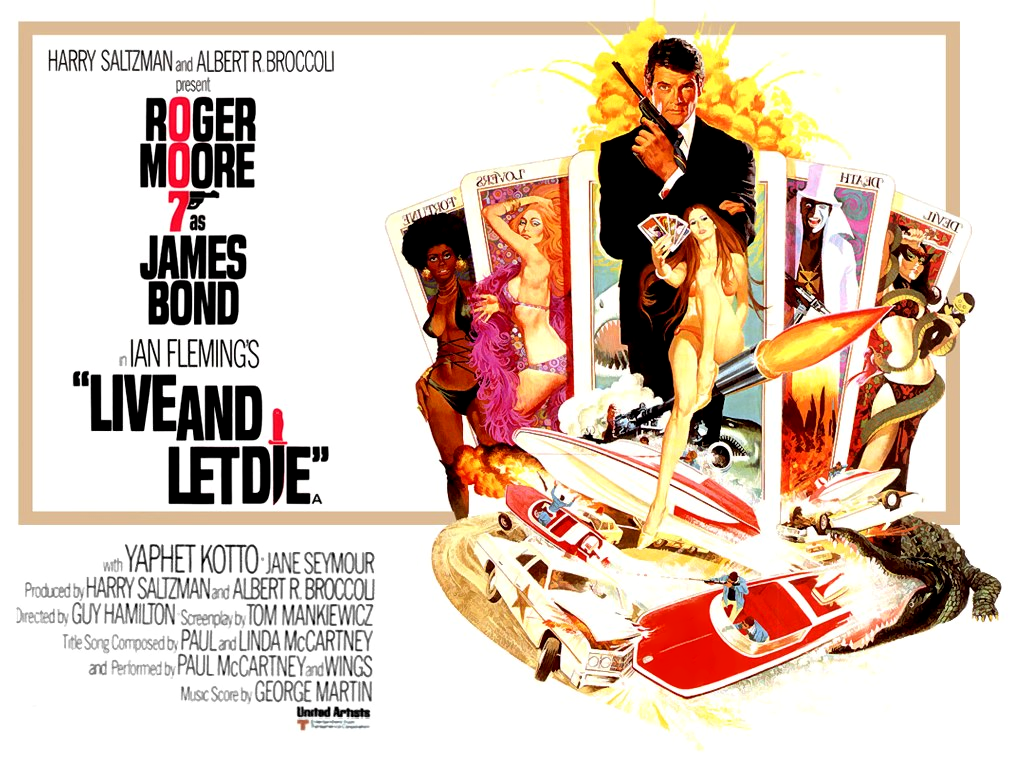
Live And Let Die – Behind The Scenes
James Bond was in trouble. The hangover from Connery exiting, George Lazenby making one movie, and Connery returning for a weak entry loomed large. Connery’s return had done nothing to move the franchise forward. Nevertheless, he was asked to come back again, but he remained resolute that Diamonds Are Forever was to be his final appearance as 007. When Tom Mankiewicz spoke to Connery about coming back, Connery said, all he wanted out of life was to own a golf course and a bank. Connery had the golf course, and he was well on his way to the bank. There was no need for him to return.
So the search was on. United Artists was insistent that the time was right to make Bond an American. They wanted Steve McQueen or Paul Newman. Director Guy Hamilton, returning from Goldfinger and Diamonds Are Forever, recommended Burt Reynolds. Broccoli talked to Reynolds, but Reynolds felt Bond should be played by a British actor and turned down further conversations.
Julian Glover, John Gavin, Jeremy Brett, Simon Oates, John Ronane, and William Gaunt all tested. Broccoli even met with Anthony Hopkins, but Hopkins did not think that he was right for the part. Meanwhile, Michael Billington was a favorite for a lot of the testing process. What was becoming clear was that Bond could not be played effectively by an American.
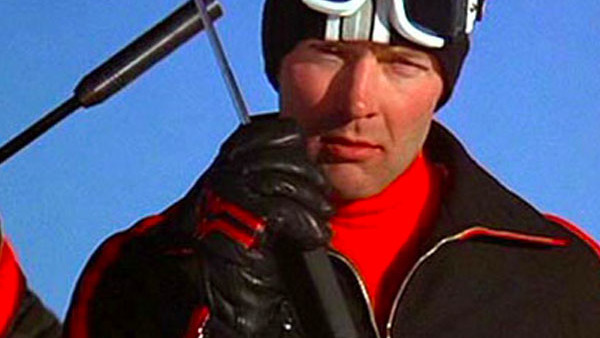
Broccoli insisted to the studio that Bond should be played by a British actor and put forward Roger Moore. Moore had been considered for the role in Dr. No and again for On Her Majesty’s Secret Service. This time schedules worked out. Moore was hired, and Hamilton and Moore both agreed that he should not try to imitate Connery, while also distancing himself from his role as Simon Templar in The Saint. Moore did this by not saying lines Connery said, which is why Bond orders a “bourbon and water” instead of a “martini, shaken, not stirred.” Moore also avoided using his trademark eyebrow raise from The Saint.
Moore described the opportunity to play Bond like “being a precious stone in an expensive mounting.” How refreshing to hear an actor not lament the horrors of fame and actually enjoy portraying a popular character for the enjoyment of viewers. This attitude enabled Moore to roll with the punches and bring something memorable to the screen.
Returning writer Tom Mankiewicz also subtly altered the character of Bond to better suit Moore’s persona. Mankowicz said, “Connery could kiss or kill a girl. Moore could kiss a girl but not kill her. Moore was also better at quipping and sophisticated comedy.” Furthermore, Moore understood that he had a totally different personality than Connery and couldn’t pull off the same edge. Instead, Moore built his performance off an incident he read about in one of the Fleming books. Bond had returned from a mission where he killed someone and didn’t like it. Moore worked that angle when it came to being Bond.
In addition, Mankiewicz was instrumental in the choice of Live And Let Die as the next novel adapted. Blaxploitation was in full swing, and the Black Panthers and other racial movements were in the news. The novel Live And Let Die contained just the inspiration for the villains, supporting characters, voodoo, and smuggling. Almost everything else was ejected for a completely new story.
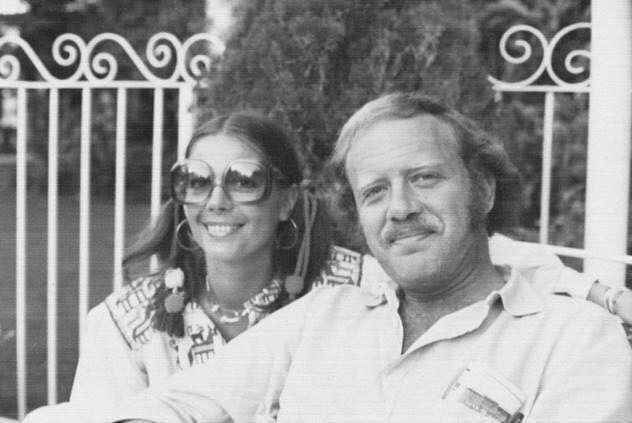
Guy Hamilton was a jazz fan, so Mankiewicz suggested he film in New Orleans. Hamilton did not want to use Mardi Gras since Thunderball featured Junkanoo, a similar event. After scouting all over the city and touring the surrounding area by helicopter, they decided jazz funerals and the canals should be made integral to the plot. This led to one property owner getting the surprise of their life. The scouting crew simply landed their helicopter on the woman’s lawn and asked if they could use it for a Bond movie. Of course! she said. Meanwhile, Mankiewicz added a boat chase to the script by writing this line: “the most terrific boat chase you’ve ever seen.” He never had time to flesh the details out, so they had to plan the chase as they filmed it in the Irish Bayou area.
Numerous mishaps occurred, including crashed boats and Moore nearly losing all of his teeth when a boat went awry during rehearsal. In the end,17 of the 26 boats provided by Glastron were destroyed. On the plus side, the speedboat jump scene set a Guinness World Record at the time of 110 feet (34 m).
To flesh out the voodoo elements of the plot, Saltzman and Broccoli visited Haiti with Hamilton, Mankiewicz, and production designer Syd Cain. There they saw actual voodoo rituals taking place. They considered filming in Haiti but instead reverted to Jamaica as Haiti was too unstable to be safe for such a large production. It was while scouting in Jamaica that the crew discovered a crocodile farm owned by Ross Kananga, after passing a sign warning that “Trespassers will be eaten”. The farm was put into the script and also inspired Mankiewicz to name the film’s villain after Kananga.
Kananga was the real deal. His father had been killed by crocodiles, and he could point out the one that did it to the Bond crew. The famous crocodile jump from the film was performed by Kananga himself. It took five takes. This is why the reptiles raise their head in anticipation to bite. They knew Kananga was coming. Kananga kept slipping into the water on the first takes due to slippery shoes. Once he solved that problem, he made it to the other side, but a crocodile still managed to grab Kananga’s heel, tearing his trousers
The scene was also a challenge for Mankiewicz. He put Bond on the small island in the script and couldn’t figure out how to get him off. Throughout filming, Cubby kept asking Mankiewicz how Bond would get off the island. Mankiewicz kept stalling by saying, “I’m working on it.” The solution they finally came up with is truly inspired.

Additional casting continued at a brisk pace. Described as pale-skinned in the novel, Mankiewicz considered turning the character of Solitaire into a black woman, with Diana Ross as his first choice. Broccoli and Saltzman decided to stick to Fleming’s description and cast Jane Seymour after seeing her in The Onedin Line. This meant Mankiewicz switched the character of Rosie Carver to a black woman, casting Gloria Hendry.
Yaphet Kotto was doing Across 110th Street for United Artists. They put him forward for the role of the villain. Kotto said he liked the voodoo angle of the story, as it played into the villain’s sense of megalomania, thinking “he can control past, present and future”.
Mankiewicz created the character Sheriff J. W. Pepper from scratch to add comic relief to the film. The Strange One and Cool Hand Luke actor Clifton James got the role.
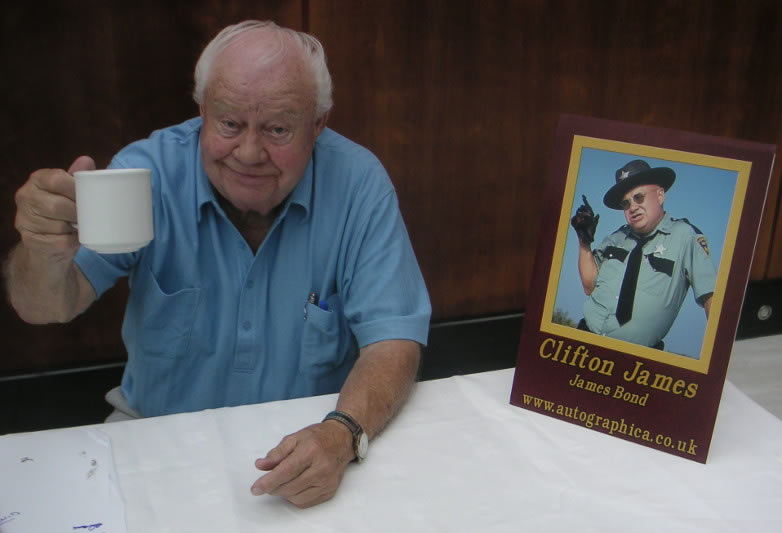
Live And Let Die was the first Bond movie not to feature the character of Q / Major Boothroyd. Desmond Llewelyn appeared in the television series Follyfoot. The makers of that show wrote him out of three episodes to free him up to appear. However, by the time his availability was confirmed, Saltzman and Broccoli had come to the conclusion that Bond was becoming too focused on the gadgets, and they decided to downplay these in Live And Let Die. Llewelyn was said to be furious.
Lois Maxwell as Moneypenny and Bernard Lee as M did reappear, however, but it wasn’t smooth sailing. Lee nearly quit the role following the death of his beloved wife. Kenneth More was primed to take over before Lee decided to return. Maxwell, meanwhile, asked for a pay rise and nearly didn’t return for Diamonds Are Forever, her scene being a last-minute insert. Due to a technical issue, Maxwell’s scenes took more than a day to shoot, so she ended up being paid more than her requested pay rise anyway.
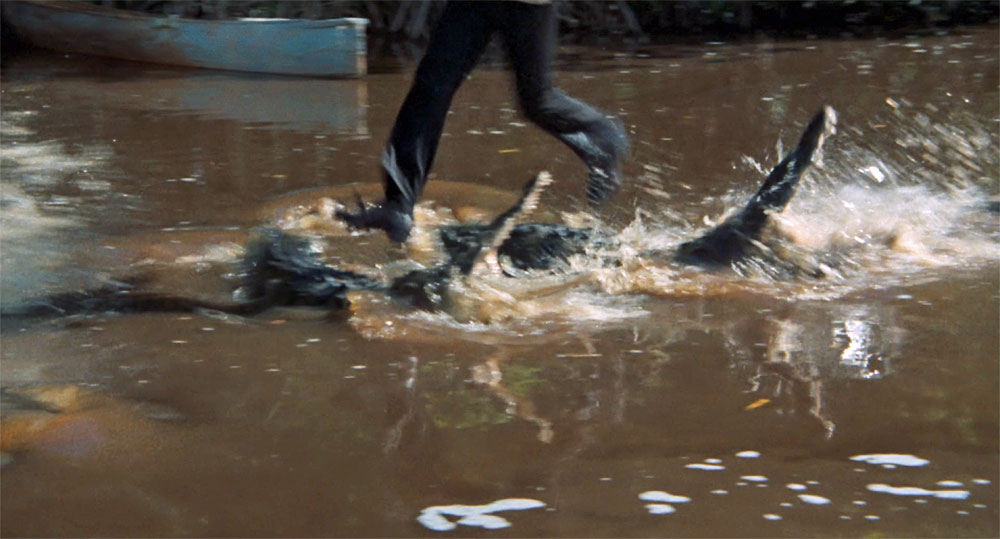
Full production got underway in October 1972 in New Orleans, Louisiana, but only with the second unit. Moore faced an inauspicious start to his time as Bond as his work with the first unit was delayed due to kidney stones. After a month they moved production to Jamaica where they filmed the San Monique scenes and the crocodile farm. While interiors were filmed at Pinewood Studios in the UK, location shooting in Harlem in New York City was spinning up. The producers had to pay protection money to a local Harlem gang to ensure the crew’s safety. When the money ran out, they had to leave Harlem. This forced them to Manhattan’s Upper East Side as a substitute for Harlem locations.
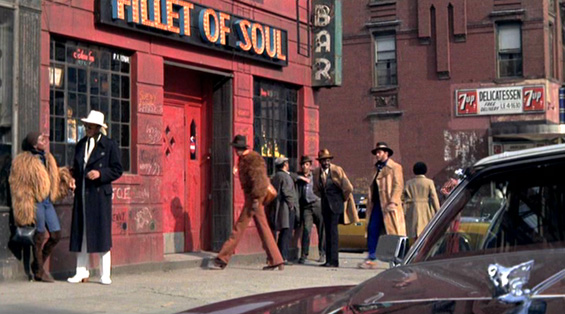
All of this is par for the course. Bond films often put participants in danger of life and limb. During the bus chase where a motorcycle crashes into the water, the stuntman landed on a bed of coral that hadn’t been cleared. What is further crazy is that Jane Seymour was actually on the bus during the skid and when its top was torn off. No one thought to use a stunt double apparently. This is odd because they could have put anyone in the seat. Viewers don’t even notice the character of Solitaire on the bus.
Seymour also had a scary moment during the scene where she is threatened with a snake. The actor carrying the snake got bit. He screamed and ran off-set. Everyone followed to see if he was okay. Meanwhile, Seymour was left tied to the pole by herself while the snake crawled toward her. Jeffrey Holder (Baron Samedi) had to overcome his fear of snakes, as well. Crewmembers didn’t expect him to be brave enough to fall into the coffin filled with serpents, but Holder had extra motivation. A member of the royal family showed up that day to watch filming. Holder, ever the professional, didn’t want to let the important visitor down. He overcame his nerves and did the stunt…quickly.
In the end, everyone lived, and Live And Let Die went on to be a success, grossing $160 million on a $7 million budget. Initial reviews of Moore in the role were mixed. Ebert said Moore had the superficial qualities necessary to play Bond but did not live up to Connery. Variety said Moore was only an “okay” replacement. But time is always the final judge. Over the years, Moore has grown to be the favorite among many fans.
Do You Expect Us To Talk?
Stark: What a curious beast Live And Let Die is. Many of the things wrong with Diamonds Are Forever are present here. Mankiewicz’s constant desire to follow a current trend, rather than create one. His American-centricity. In places, too light and comedic. It shouldn’t work. It’s just all wrong… and yet it’s just so right. How and why does it overcome itself to work? Is this one of those examples of something being more than the sum of its parts?
Wrenage: Live And Let Die is a fine palate cleanser after Diamonds Are Forever. Roger Moore enters the franchise like a fresh martini. Bond tromping around Harlem, decrepit New York, and swampland is a far cry from his usual exotic locales, yet it oddly works, as you say.
Perhaps it is because Live And Let Die puts Bond in a fish-out-of-water situation that gives his character added dimension. Bond’s confidence isn’t limited to operating within a continental, country-club world. Bond is confident in whatever situation he finds himself in. I like the way he nonchalantly enters Harlem without a care. Bond also doesn’t care if you’re black or white. He only cares about operating according to his black-and-white code of duty.
Stark: “You can’t miss him, it’s like following a cue-ball” is a great line!
Ranking And Rating
Let’s get to the ratings and rankings. Wrenage and Stark will give their opinions on the Bondian elements found in Live And Let Die and come up with a score and ranking to place this appropriately in our league table of all things Bond.
Bond
Stark: Is Roger Moore incredibly lucky? By that, I mean that George Lazenby had proved that somebody other than Connery could play Bond. Lazenby had also taken all the barbs and the criticism for not being Connery and then simply moved out of the way. Roger Moore would go on to steady the ship and become the longest-serving Bond in terms of time in the role until Daniel Craig. He has also played Bond (officially) more times than any other actor. His seven movies remain an unbeaten record. Yet, contextually, he must have been helped by Lazenby’s short stint.
Wrenage: Part of the fun of being a Bond fan is comparing the merits of the various actors who have played Bond over the years. Yet, I don’t compare Connery and Moore much at all. They are both exactly right in their own way. Connery is more sardonic, cold and, perhaps, truer to the literary Bond. Moore is more aloof, sophisticated, and likeable onscreen. Lazenby, meanwhile, was just a train sailing by in the night…
Moore’s version of Bond in Live And Let Die is probably one of his edgier portrayals of the character. He is borderline predatory with Rosie and Solitaire, not only using them for the sake of the mission but for his own pleasure. Moore has solid Bondian moments with both of them. For example, when he threatens to kill Rosie, she says he wouldn’t do that after what they had done. To which Bond replies, “I certainly wouldn’t have done it before…” Likewise, Bond stacking the deck with Solitaire is a cunning way to exploit her to gain access to Kananga’s operation (I could do without the “007” embossed cards, though; it is a bit on the nose).

Stark: Moore often talks about how he wanted, and needed, to play Bond differently than Connery. This is often discussed when talking about Moore’s seemingly lighter-hearted approach to the character. Yet, for me, his three best performances as 007 are his first three movies where he is definitely playing closer to Connery, and indeed Fleming’s character. He is pretty effortless here. Smooth. Charming. Ruthless. Dangerous. Not yet overly loaded with quips winks, and gags.
Wrenage: While the humor in Diamonds Are Forever spilled over into campy, it plays better in Live And Let Die. Maybe it is because Mankiewicz wrote the entire script and wasn’t merely plugging quips into it. Or maybe Moore is simply that much better at delivering groaners. Regardless, I mostly laugh along with Live And Let Die, rather than roll my eyes. I particularly like Moore’s delivery of “same time tomorrow, Mrs. Bell?” to the hapless flight student he drags along on the airport chase.
Stark: In these early days, is it simply Rog’s delivery that makes us think he’s funnier than Connery? Or is it our confirmation bias because we know what is coming later for him?
Wrenage: I never even knew Connery could be funny until Indiana Jones and the Last Crusade. Unless one counts Zardoz as funny. I certainly can’t help but laugh at Connery’s outfit in that one, but my laughter sounds strangely like crying…
Bond Girl
Stark: Jane Seymour was stunning in Live And Let Die, and she’s still stunning today. Absolute minx in The Wedding Crashers, and pulled off Playboy at 67. Beautiful woman. Her character in Live And Let Die, though, perhaps undercooked. Maybe it is a trade-off against having so many villains that are all above average, so she is relegated to damsel in distress.
Wrenage: Jane Seymour might get the title of Most Beautiful Bond Girl. She is maybe the last of the classical movie-star beauties. Seymour has a bit of that Grace Kelly element to her, whereas screen sirens that came after Seymour took on a more slattern vibe. That being said, Solitaire is not a spectacular Bond girl. Age may have something to do with it. Seymour was barely over twenty when she filmed Live And Let Die. She was just a pup, and it shows. She comes off as a kid along for the ride.
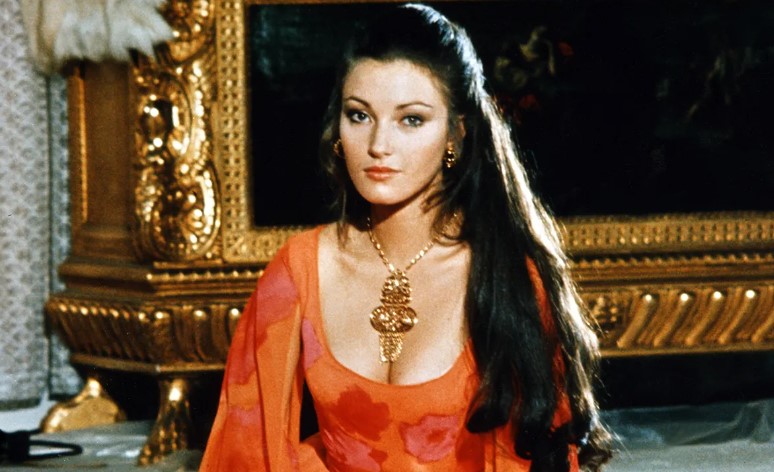
Stark: Of course, she’s far from the only Bond girl in the movie. Bond went straight for some interracial action. It was always going to happen.
Wrenage: Gloria Hendry as Rosie is a better character. She gets to play inexperienced and duplicitous. Even though Hendry was only two years older than Seymour, she comes across as more of an equal to Moore.

Villain
Stark: Big fan of Yaphet Koto in this movie. He could have been a blaxsploitation-style cartoon but he really brings the menace.
Wrenage: Yaphet does solid work as Kananga. He brings an element of enjoyment to his job, along with being dangerous. A subtle aspect of his character that gives him a bit of depth is his jealousy of Bond in regards to Solitaire. You get the sense Kananga has feelings for Solitaire and is genuinely hurt by her betrayal. Yet, Yaphet doesn’t get bogged down in this. He understands he is there to be a villain, not sympathetic.
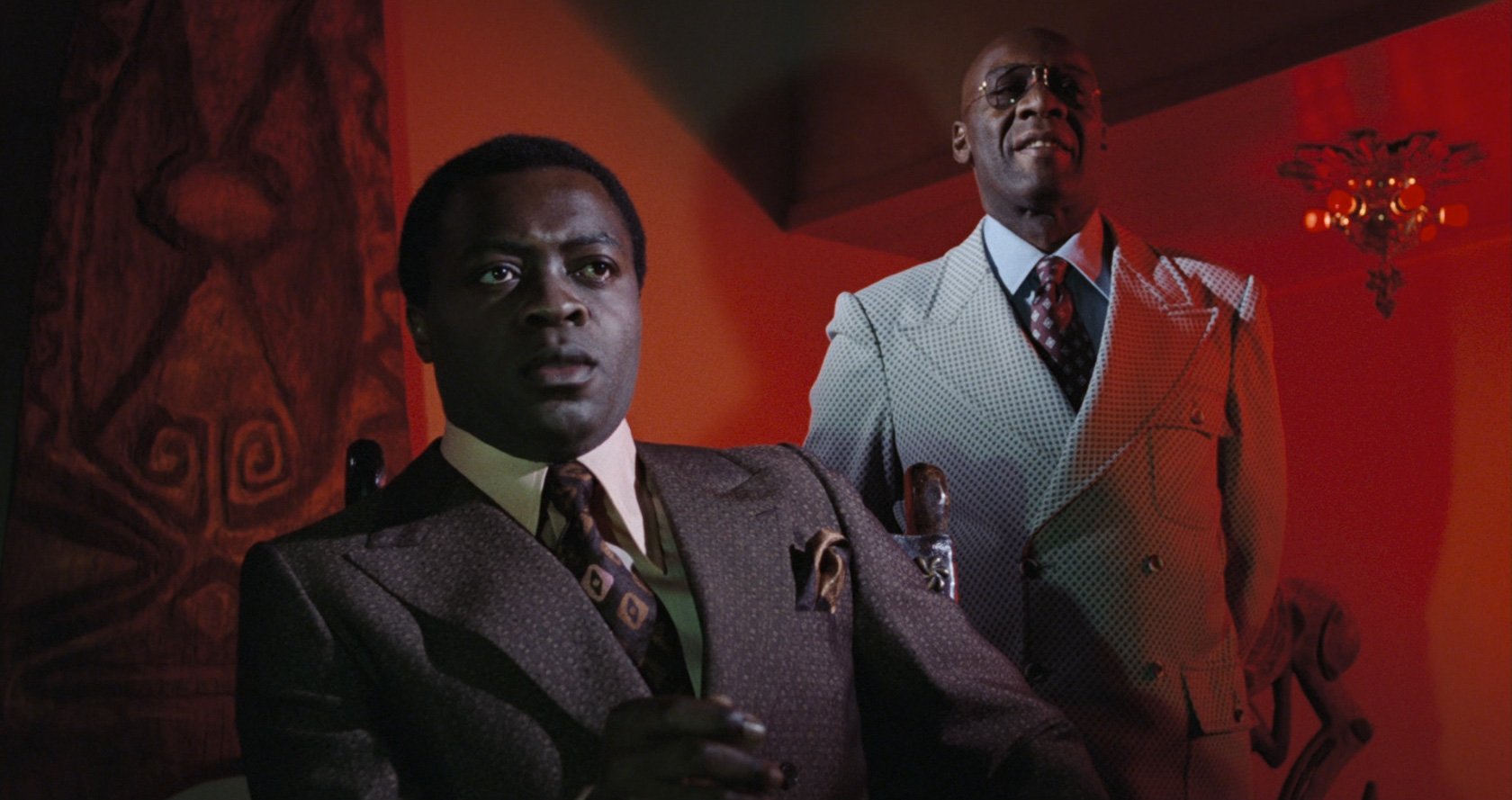
Stark: I get that, regarding Solitaire. As he tells her, it is up to him to decide when to take her gift away, by taking her virginity. A plan now ruined by Bond. There are elements of that with Mr Big and the character of Solitaire in the book.
Wrenage: Fun fact: Rick Baker did the Mr. Big makeup for Yaphet!
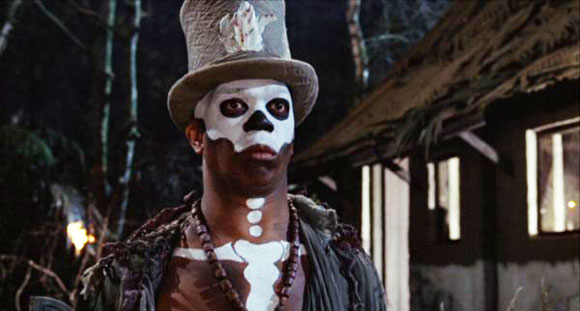
Stark: Baron Samedi shouldn’t work. He should be ridiculous as a character, and yet he does work perfectly. Menacing, mysterious, dangerous. He’s another big difference from the book, but that you can see traced into the movie. In the book he’s just mentioned as something of an alter-ego to Mr Big. He’s simply the voodoo legend Big has appropriated to scare the locals into line around his smuggling operation. That sort of flows to the movie, but with Kananga and Mr Big being alter-egos. The heavy lifting is really done by Tee Hee in both print and on film.
Wrenage: Live And Let Die has a sneaky good one-two punch when it comes to henchman. Julius Harris is great as Tee-Hee. He comes off as a genuinely frightening physical presence. Guy Hamilton asked Harris what kind of weapon Tee Hee should have, and Harris is the one who came up with the idea of the mechanical arm. The gag plays great on screen and gets used to full effect, up to and including being the reason for Tee Hee’s demise. That’s good writing.
Meanwhile, Geoffrey Holder is also great fun as Baron Samedi. Holder brings a level of theatricality to the film that I can’t really think of any other Bond character matching. I could watch a lot more of Tee Hee and Baron Samedi, but I am hard-pressed to know if more of them would be better or not. They may work best as seasoning, not a full meal.
Possible controversial take…when it comes to metal-augmented villains, is Tee Hee better than Jaws? Jaws certainly struck a nerve with filmgoers, but Tee Hee is technically superior since he gets actual lines.
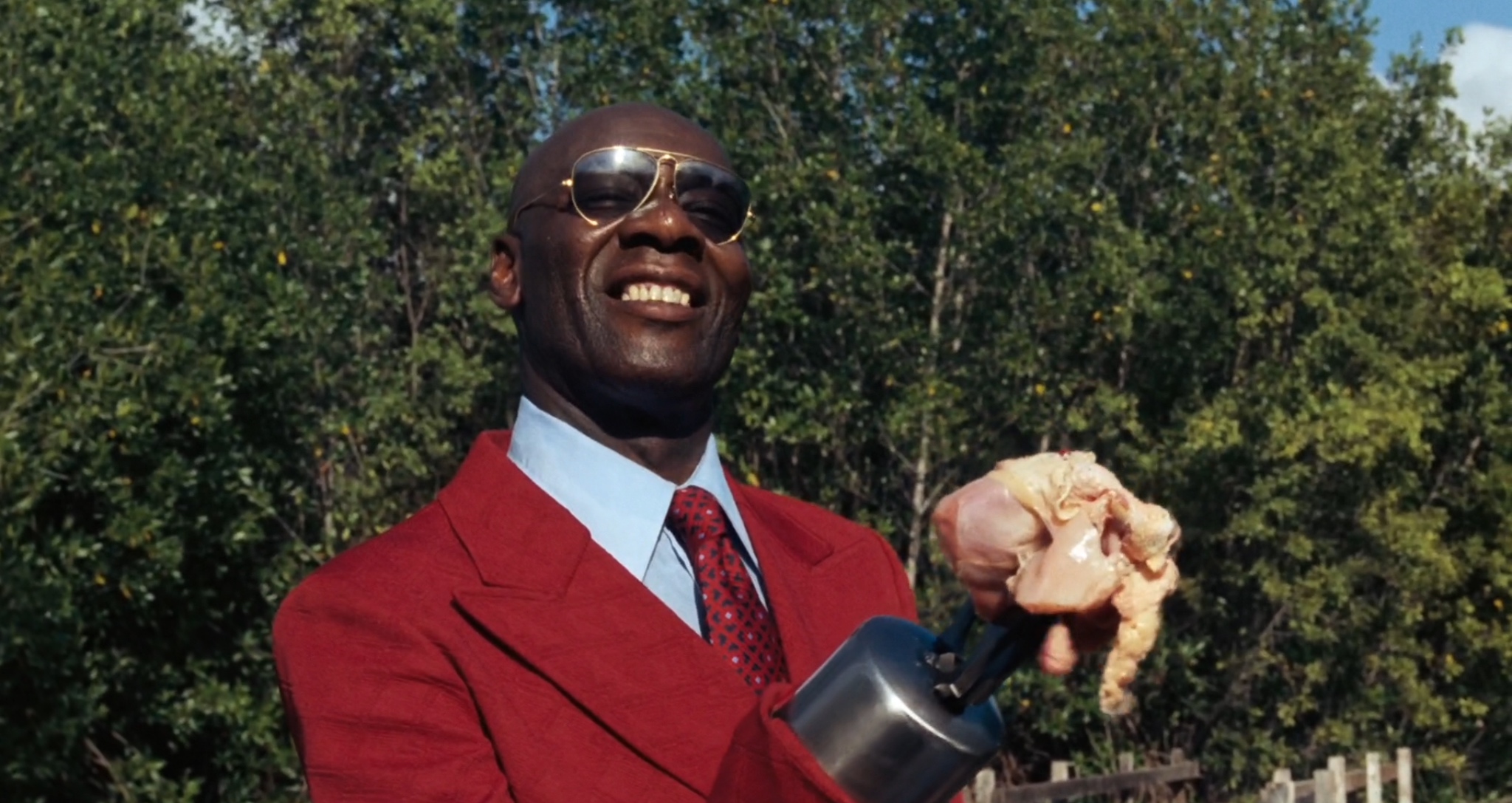
Plot
Stark: I like the simple A to B to C nature of the plot . Simply the murder of three MI6 agents under mysterious circumstances within 24 hours. The links to Kananga. Then away we go. I also like the villain’s scheme being more focused, grittier, and more street-level than world domination via space laser, or nuclear weapon. While the plot is very different from the novel, it also echoes that Mr. Big is a smuggler with ties to SMERSH, which is why he ends up on Bond’s radar.
Wrenage: The plot of Live And Let Die is based. No rocket ships eating other rocket ships in this one, just good old-fashioned drug smuggling. Kananga’s idea to monopolize the drug trade is great fun. Meanwhile, the film never bogs down. Bond is regularly threatened or participating in action scenes to keep up momentum.
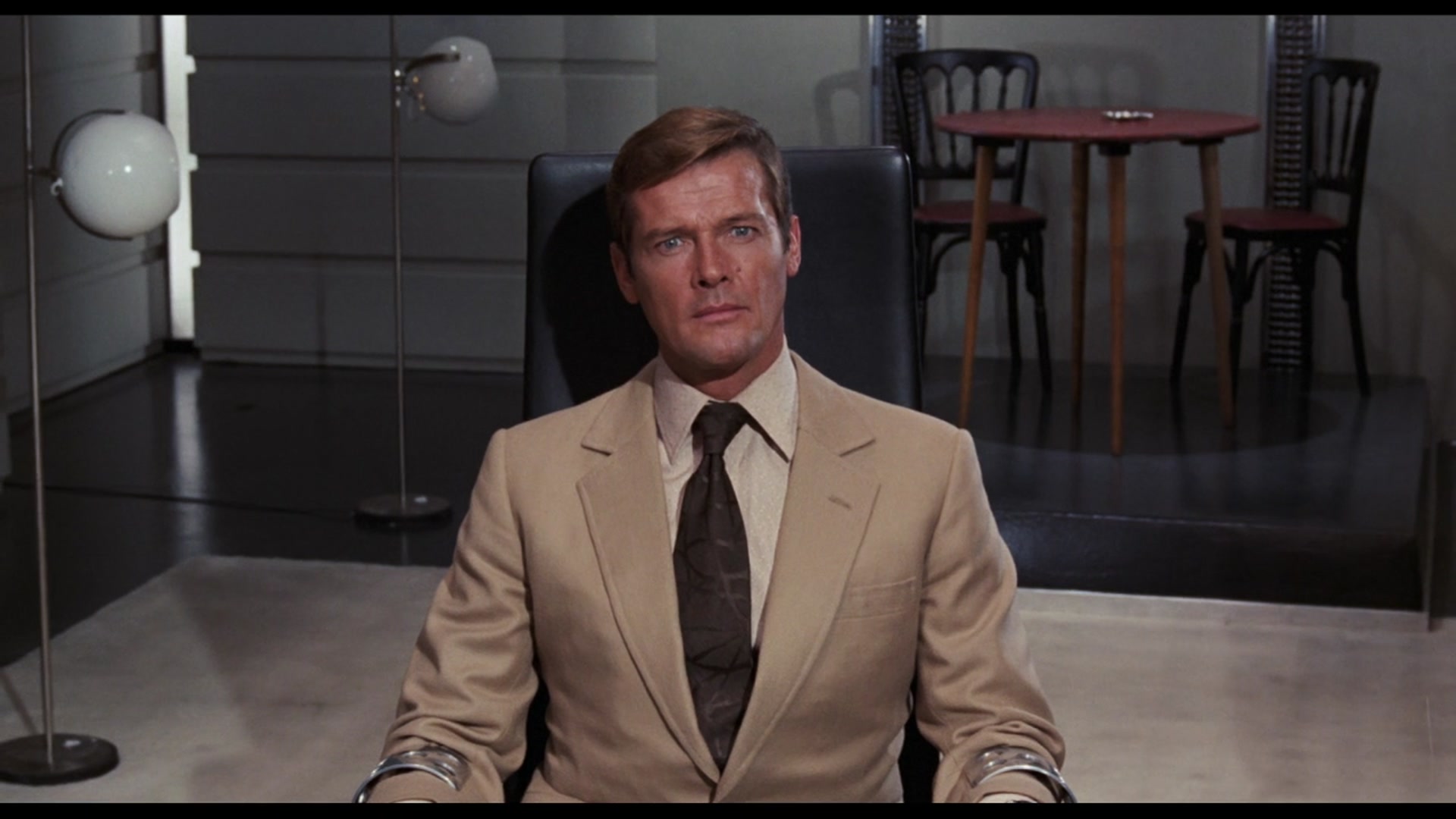
Stark: The book, only the second Bond novel, also has a notable place in Bond history. It is the one where Felix gets fed to the shark – borrowed for Licence To Kill. It is also considered “problematic” today. Look at the chapter titles for a clue as to why.
Wrenage: My only real complaint with the plot is that the climax seems to be a different movie. I have no idea why a Baron Samedi robot comes into things, along with a watch that can suddenly be a buzzsaw and Kananga turning into a helium balloon. Oh well, at least Live And Let Die goes out on a high note. Getting one last dose of Tee Hee and Baron Samedi is a nice touch.
Stark: Always good to see sharks as a villain’s chosen disposal method for the hero though. If that didn’t happen, Austin Powers would be one gag down.
Action Sequences
Wrenage: I never really think of Live And Let Die as an action-heavy Bond film, but it kind of is… All of the bigger set pieces are fun: the bus chase, the airport chase, and the boat chase. The smaller stuff is satisfying, as well: the alligator farm, the train fight, etc.
By the by, I never noticed this before, but watching the Bond films back-to-back brought it out. The Las Vegas sheriff (Leroy Hollis) from Diamonds Are Forever returns in Live And Let Die. He is the policeman in charge of the ill-fated bridge blockade during the boat chase. I’m pretty sure he is meant to be the same character in both films, since he gets a closeup in Live And Let Die. Perhaps the character got demoted from his failure to catch Bond in Diamonds Are Forever and got assigned to the backwaters of America.
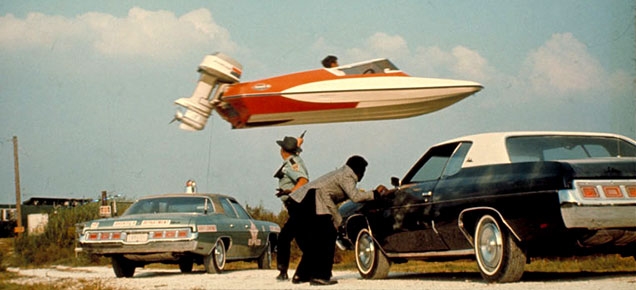
Stark: This boat chase is basically a cinematic line in the sand. Every boat chase ever in cinema history has then had to try and top it, or forever be “not as good as that boat chase in Live And Let Die!” Sheriff J.W. Pepper remains amusing here, rather than annoying. The whole gag around his brother-in-law Billy Bob and the cop’s reaction is just perfect. The sequence is a long one, but doesn’t drag.
Pre-Title Sequence
Stark: First pre-title without Bond in it. A different direction after the entire pre-title of On Her Majesty’s Secret Service was built entirely around the reveal of a new 007.
Wrenage: The pre-title of Live And Let Die is not extravagant. The jazz funeral is a great gag, though.
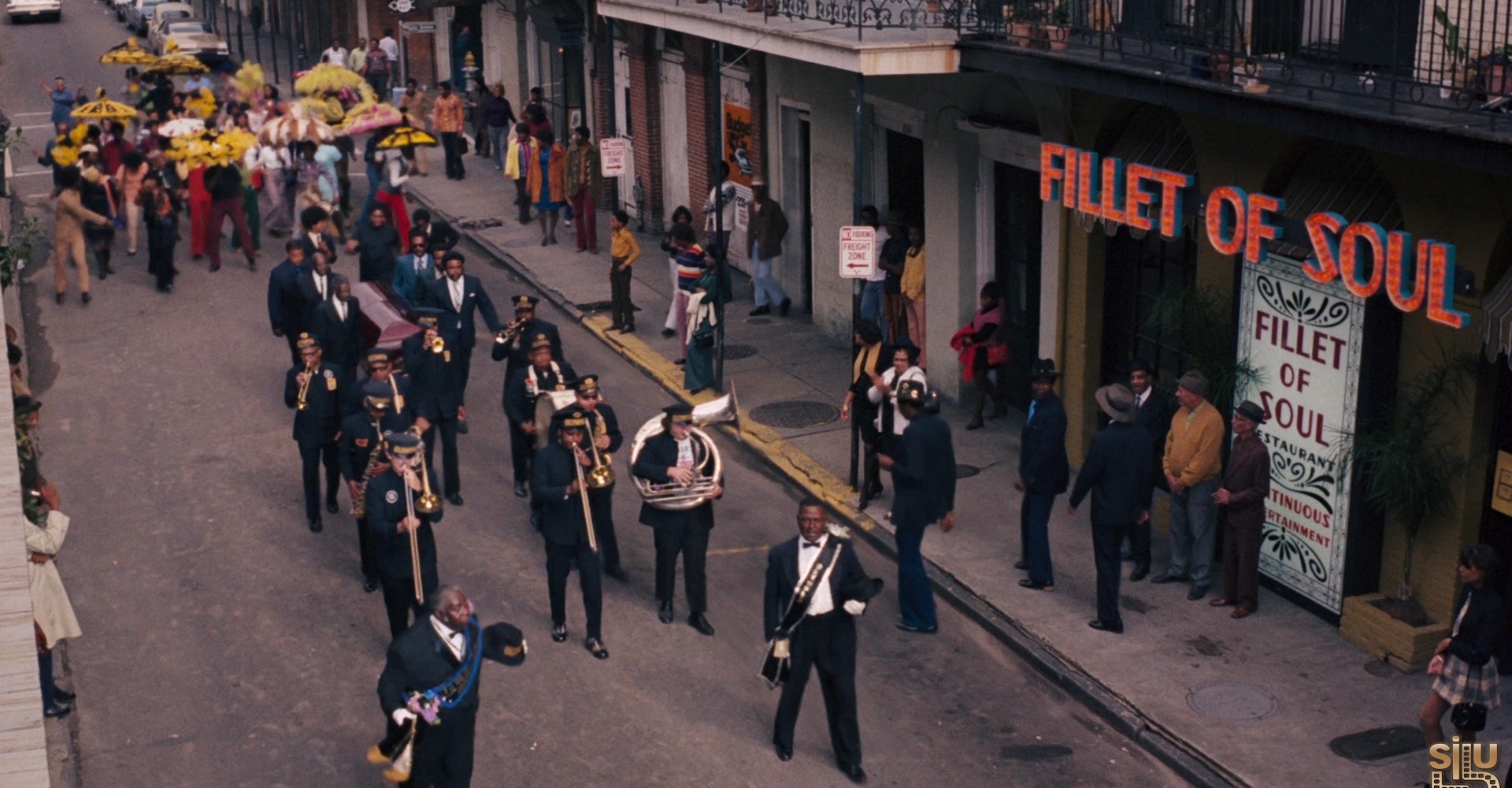
Stark: Story about the snake victim agent in the pre-title, he really did pass out in that scene. The extra was absolutely terrified of snakes so he fainted! After watching this again I just want to go eat in a Fillet Of Soul and watch a jazz funeral.
Wrenage: I’m not sure why some of the black dancers in the funeral procession have white-person rhythm, though. What happened to them? Do we need to refer them to Blacks Without Soul to get help?
Stark: Clearly they weren’t getting their extras from the Soul Train runway!
Theme Song
Stark: What isn’t there to say about this? Possibly one of the longest-lived Bond themes. McCartney is still dining out on it, making it integral to his live sets with massive production and pyrotechnics. He even headlined Glastonbury with it. Up there with Bassey and Simone as the elite tier of Bond themes. Even if Guns And Roses tried their best to murder it.
Wrenage: Live And Let Die has proven to be a classic song. It works well within the movie, too. It gives the film a lot of pop and let’s the audience know this is a new era of Bond. Rather than the more old-fashioned songs of previous films, this one rocks out.
The score throughout Live And Let Die is solid. John Barry didn’t return for this one. Rather, Fifth Beetle, George Martin, worked on the orchestration for Live And Let Die. A lot of the music builds off the riff of the theme song, and it gives a lot of energy to the proceedings. Why no Barry? Apparently, he was working on a musical. Plus, he had a fallout with Harry Saltzman over the title song for Diamonds Are Forever. Hence, he was unavailable.
Stark: I love that Barry was so nonchalant as to simply excuse himself from a Bond movie because he didn’t like the last song.
X-Factor
Stark: The intro to the longest-serving Bond (until Daniel Craig) and still undisputed leader of the pack for number of movies as 007.
Wrenage: Roger Moore taking his first foray into the role is a pretty big X-factor.
This is maybe as good a time as any to talk about J.W. Pepper, as well. This character flirts with, and sometimes crosses, the over-the-top line, yet he generally works. Clifton James gave the character a lot of personality, and his dialogue is good fun. Maybe the reason J.W. works is that he isn’t purely a caricature. Some satire exists with him, as well, especially when J.W. waxes enthusiastic about his “brother-in-law” Billy Bob.
“If one side of the family don’t get him, the other side will!”
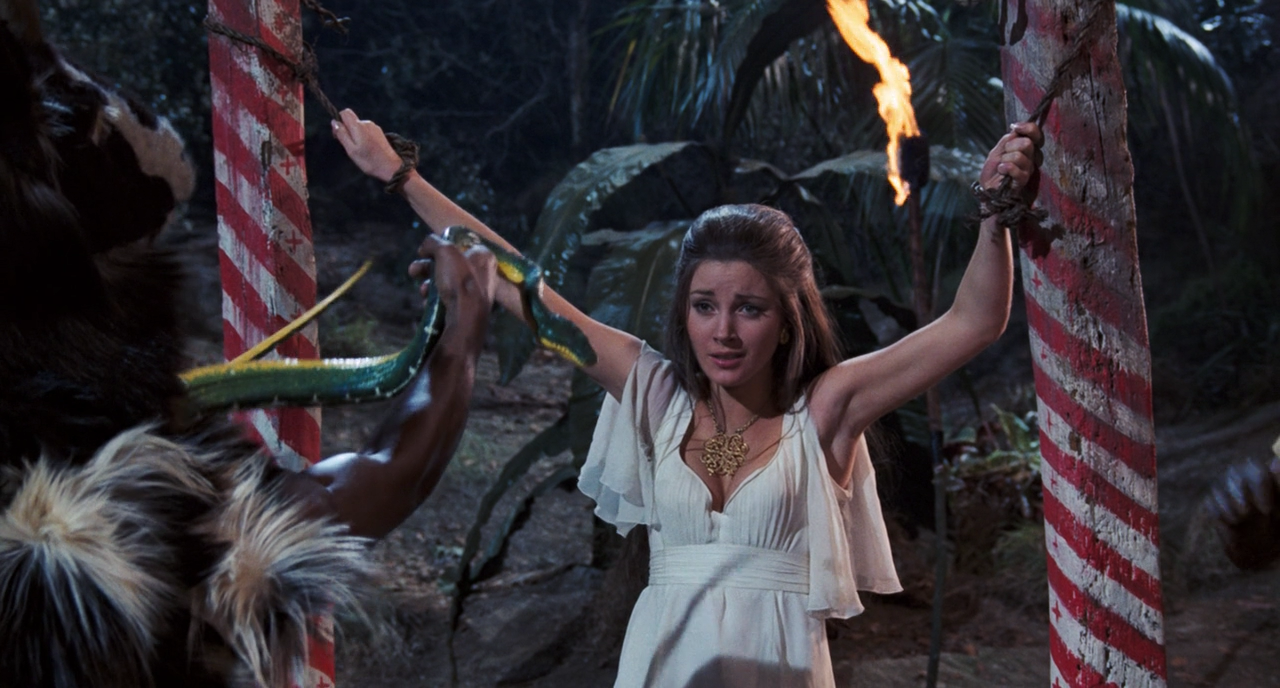
Stark: He isn’t annoying here. That would come later, in Bangkok. His character and that gag make me think about just how effortlessly the movie plays with the racial stuff. It makes it all seem comically easy compared to how we seem to approach this kind of thing these days.
Scoring Breakdown
| Stark | Wrenage | |
| Bond | 7 | 8 |
| Bond Girl | 5 | 5 |
| Villain | 7 | 7 |
| Plot | 7 | 7 |
| Action Sequences | 7 | 8 |
| Pre-Title Sequence | 5 | 5 |
| Theme Song | 6 | 9 |
| X-Factor | 6 | 7 |
| TOTAL | 50 | 56 |
Stark: Seymour is stunning, but loses points for the character. The pre-title sequence is lacking the big thrill. That, and the American-centricity of it probably stop it scoring a touch higher. A solid movie, though, and a solid start for Big Rog.
Wrenage: When it comes to the Bond pantheon, Live And Let Die doesn’t seem to get mentioned much. Yet, it has a lot of good things going for it. The film looks great, as well. After Ted Moore’s disappointing turn on Diamonds Are Forever, he gives Live and Let Die a look that hearkens back to Dr. No. I had a good time watching it. It might have been my favorite watching experience so far. Moore isn’t as manly, athletic, or hairy as Connery, but, man, the camera sure loves him. Moore is effortlessly charismatic. And how can you not like a guy who just took an Oscar nobody claimed home with him after that whole Marlon Brando thing at the 1973 Academy Awards?
Stark: He was one hilarious mofo too. I have read all his various autobiographies and each one is laugh-out-loud funny in places. Now I am reminded that he has passed… and I am sad.
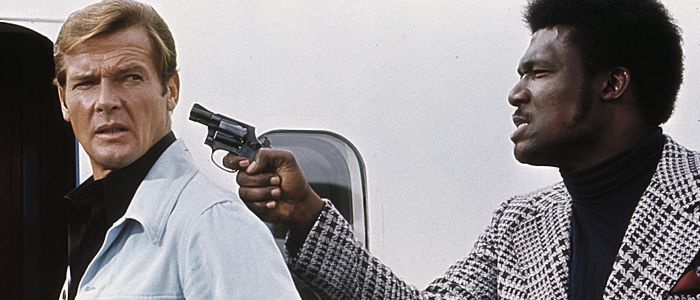
Overall Rankings
First Tier:
From Russia With Love (61.5)
On Her Majesty’s Secret Service (61)
Goldfinger (54.5)
Thunderball (53)
Live and Let Die (53)
Second Tier:
You Only Live Twice (51.5)
Dr. No (49.5)
Diamonds Are Forever (34.5)
Third Tier:
(Empty)
Fourth Tier:
(Empty)
That’s A Wrap
Stark: Tied with Thunderball. Curious. You Only Live Twice relegated. Curious too. Well, this really is throwing up some unexpected stuff.
Wrenage: I am disappointed You Only Live Twice dropped out of the top tier. I’d pull Thunderball out before that, but the score is the score! I see we have our first tie between Thunderball and Live And Let Die, as well. They are very different movies when put directly against each other, but they end up with a similar score when all of the variables are considered.
Stark: I can only see things getting more messy and even more argumentatively complex between Outposters as we carry this on. Some controversial opinions and flat-out arguments feel like they are ahead here.
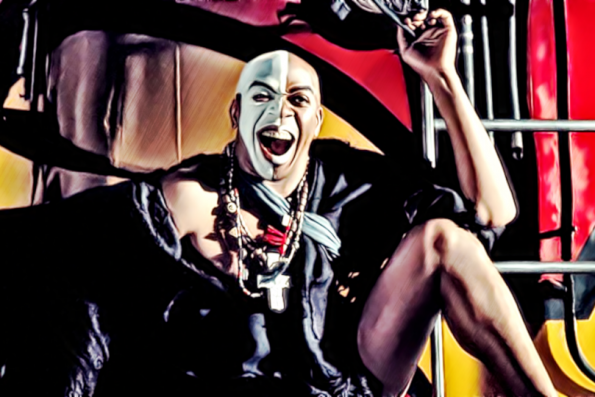
NEXT TIME… We move from Blaxploitation to martial arts as 007 faces his evil mirror nemesis, while Wrenage and Stark face the scrong system again. It’s time for The Man With The Golden Gun.
Check back every day for movie news and reviews at the Last Movie Outpost
[/et_pb_text][/et_pb_column]
[/et_pb_row]
[/et_pb_section]


